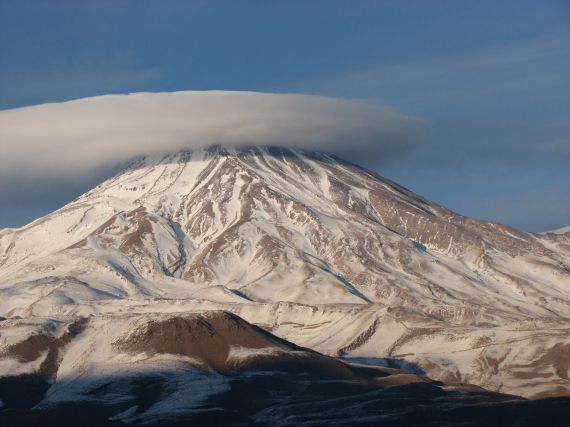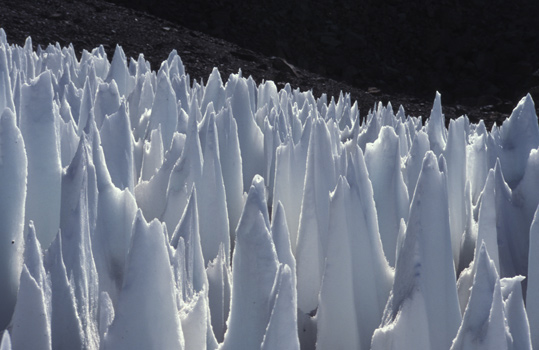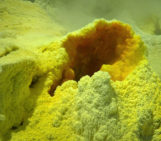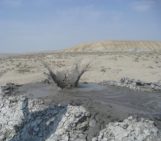This is Damavand Volcano, Iran. Its history is one of short bursts of eruptive activity followed by long periods of quiescence and while there are active fumaroles near Damavand’s summit, the volcano has been dormant for the past 1000 years. The cloud that encircles its peak is known as a cap cloud, so-called because these peculiar clouds form around high peaks, adding a flat white cap to mountain tops. Cap clouds form as rising warm, moist air is forced up by the mountain’s topography and over its peak. Here, the water vapour condenses and is shaped by horizontal winds.

“Damavand Volcano, Tehran (Iran)” by Mostafa Ganjian. This image is distributed by the EGU under a Creative Commons Licence.
Damavand Volcano is actually capped by glaciers that have been retreating since the 1930s. Within the summit crater there are huge numbers of penitents: sharp pinnacles of ice that form in arid, high altitude regions, typically more than 4000 metres above sea level . Damavand’s peak stands some 5670 m above sea level and the pinnacles can range from a few centimetres to several metres in height! They form as snow sublimes, changing straight from a solid to a gas, in the presence of solar radiation. The vapour is then redeposited on the snow below and over time this process forms a snowy spire that stretches in the direction of the sun.
References:
Davidson et al. (2004) The geology of Damavand volcano, Alborz Mountains, northern Iran Geological Society of America Bulletin, 116, 16-29
ESO APEX’s Icy Companions (accessed July 2013)
Imaggeo is the EGU’s online open access geosciences image repository. All geoscientists (and others) can submit their images to this repository and since it is open access, these photos can be used by scientists for their presentations or publications as well as by the press and public for educational purposes and otherwise. If you submit your images to Imaggeo, you retain full rights of use, since they are licensed and distributed by the EGU under a Creative Commons licence.




